Results 4,121 to 4,130 of 12096
Thread: Anandtech News
-
07-25-14, 05:00 AM #4121
Anandtech: ADATA Launches XPG V3 DDR3 Range
Despite the talk surrounding the introduction of DDR4 to the market, the volume product for the foreseeable future is still DDR3. We have done a number of memory scaling articles in the past [1,2,3], but due to the resurgence of growth in the gaming segments over the last several quarters, there is still a demand for high speed DRAM, especially those that match the style of the build if the user or gamer wants to show it off at an event. This has caused some of the enthusiast DRAM manufacturers to re-launch their high end modules under new names and new skins, with the option of customization. This lies at the heart of ADATA’s new XPG V3 DDR3 range.
The finned array for the heatsinks can be removed, similar to other high end ranges, and replaced with a custom color. ADATA is saying that the first batches of these modules for retail will include a second set of fins, so users can select between gold and red. There are plans to launch other colors in the future.
Launched SKUs will first be available in gold/red, in either 2x4 GB or 2x8 GB kits, with the following speeds:
DDR3-1600 9-9-9-24 1.50V
DDR3-1866 10-11-11-30 1.50V
DDR3-2133 10-11-11-30 1.65V
DDR3-2400 11-13-13-35 1.65V
DDR3-2600 11-13-13-35 1.65V
DDR3-2800 12-14-14-36 1.65V
DDR3-2933 12-14-14-36 1.65V
DDR3-3100 12-14-14-36 1.65V
All kits will support XMP 1.3, use 8-layer PCBs with 2oz copper to improve signalling, and Thermal Conductive Technology (TCT), which is a fancy way of saying that the DRAM chips themselves are in contact with the heatsink, so the heatsink may be hard to remove depending on the bonding.
With the high frequency modules, it is always worth noting that these are designed for use with Ivy Bridge and Haswell CPUs, and the quality of the memory controller will determine the maximum speed possible. All the Ivy Bridge and Haswell CPUs I have tested, at stock, will easily do DDR3-2933, and should find DDR3-3100 OK as well with a small base frequency overclock. Overclocking the CPU may reduce the peak memory frequency possible, and thus if running an overclocked system, a balance may be needed as well as the expertise/guide to manage that balance. This is true with any high speed memory, not just the ones here, such as our reviews of the TridentX style or ADATA's own XPG V2 DDR3-2800.
ADATA has offered us a review sample which should arrive shortly. Stay tuned for the review. I am currently awaiting a full list of MSRPs and will update the news when it arrives.
Source: ADATA
Gallery: ADATA Launches XPG V3 DDR3 Range




More...
-
07-25-14, 12:30 PM #4122
Anandtech: LG G Watch Giveaway
Last month's Google IO saw the official introduction of Google's Android Wear as well as the first two devices to run the new wearable OS. Among those was LG's G Watch, a Snapdragon 400 (4 x ARM Cortex A7) based Android Wear device with a 1.65" IPS display. As a show of continued support for the Wearables section on AnandTech, ARM is providing two G Watches as giveaways to two lucky AnandTech readers.
To be elligible you need to be a US resident with a US mailing address and leave a comment below. In your comment, ARM would like to know what segments or applications you think wearables would be most successful in. Some examples being communication, enterprise, fashion, healthcare, security, fitness, etc...
Leave your feedback in a comment below and that'll automatically enter you for the giveaway. Good luck!
More...
-
07-26-14, 05:55 AM #4123
Anandtech: Filling the Gap: AMOLED and LCD from 2010 to 2012
For a while now, I’ve realized that there is a massive gap in the continuity of smartphone display history. Until the last few months of 2011 and early 2012, proper testing of smartphone displays was few and far between. Most websites tested peak brightness and contrast, and possibly white point. While some websites did go in depth, they would often only test a few phones. Of course, now things are different. Websites are starting to scrutinize display quality from all angles from color accuracy to reflectance, but no one has ever gone back to properly test old devices.
To find out how they performed, read on.
More...
-
07-28-14, 08:30 AM #4124
Anandtech: AMD Gaming Evolved Client 4.0 Released
Just over a month ago, AMD and their partner Raptr pushed out the first version of their video recording Game DVR utility, which ships as a part of AMD’s second-party sourced Gaming Evolved Client. Last month’s release saw the initial take on this feature in beta form, which was a generally positive experience that proved the core technology worked, though not without some rough edges that remained to be cleaned up. Since then the Raptr team has been further working the Game DVR function as part of a broader client update, culminating in today’s release of version 4.0 of the Gaming Evolved Client.
Ahead of today’s client release Raptr gave us some time to spend with the forthcoming update, and while the Game DVR function is still officially in beta as version 4.0, we can briefly report that AMD and the Ratpr team have made good progress in just the last month. In the earlier beta of the Game DVR function – now dubbed Game Video Recorder, or GVR – we encountered both compatibility and image quality issues, and in the case of the latter the problem has been fully resolved in our test suite. The one game we were having a problem with on the previous client, Thief, now records with the correct gamma. All other games that we’ve had a chance to test (our complete benchmark suite and then some) are similarly correct.
Game compatibility however is still hit & miss. GEC will only enable recording for games it can detect – this essentially serving as a whitelist of sorts – and it needs to be able to both detect the installation of a game and its launch. Of the dozen games we’ve tried, all of these games are on the compatibility list and their installations are detected, but GEC stubbornly can’t detect the launch of Bioshock Infinite and hence can’t record it. The actual recording process itself is rather generic and Bioshock is supposed to be supported, so this would seem to expose some weaknesses in GEC’s launch detection process rather than a lack of (intended) support.
Otherwise our other 11 games were detected just fine. And indeed the Raptr team is claiming that they now support 5000 games, versus 175 for NVIDIA’s GeForce Experience. At 5000 games we have no way to fully validate this claim – and meanwhile we’d note that GeForce Experience worked with all 12 of our test games out of the box – but it’s worth pointing out that for technical reasons it’s important for GEC to support so many games. Since GEC lacks a fallback measure equivalent to GeForce Experience’s desktop capture mode and doesn’t officially support adding unsupported games, a large supported games list is necessary in this case to enable recording of as many games as possible.
Along with the under the hood updates to the GVR function, Raptr has also given the feature a UI tweak from the beta. Of particular note, the always-on (Replay) and on-demand (Record) functions have been separated from each other, allowing them to be easily enabled and disabled separately from each other. GVR’s settings pane has also been tweaked for 4.0, with image quality settings being excised to their own tab for space. Finally the in-game overlay HUD icons for the GVR functionality has also been overhauled to make it clearer when the Record and Replay functions are in use and how to use them, with the HUD being hideable when not in use.
Finally, with the release of the 4.0 client the Raptr team is looking to parlay the GVR functionality into their larger social networking ambitions, with the final feature addition of the new client being a dedicated community replay showcase. The replay share feature allows for replays to be uploaded to YouTube and simultaneously listed in the Raptr community showcase, complete with comments and hashtags. The built-in video uploading is fairly clever – many, if not most of these recordings will be destined for YouTube – though I’m not sure how frequently gameplay videos are uploaded directly to YouTube without editing (something that notably Sony included as part of their replay sharing package on the PS4).
The Gaming Evolved Client 4.0 update will be released later today, and should be available both as an automatic client update and as a download from AMD's Gaming Evolved Client website.
More...
-
07-28-14, 08:30 AM #4125
Anandtech: QNAP TS-451 Bay Trail NAS Performance Review
The launch of the QNAP TS-x51 series was covered in detail last month. Its introduction has revitalized the premium NAS market for SOHO and power users by providing a powerful enough alternative to the Atom D270x-based NAS units. The 22nm Celeron J1800 in the TS-x51 is a SoC (obviates the necessity for a platform controller hub) and brings a revamped Atom microarchitecture (Silvermont) to the NAS market. Does this make the TS-x51 perform better and consume lower power compared to its predecessors in the same class? Read on for our review of the 4-bay TS-451 to find out.
More...
-
07-28-14, 06:00 PM #4126
Anandtech: Xbox Games With Gold August 2014 Preview
The latest round of upcoming games for the Games with Gold program have been announced today, and unlike last month, there are no carryover games on the list. As seems to be the norm, Xbox One owners with Xbox Live Gold subscriptions will receive two games available for a free purchase for the entire month of August, while Xbox 360 owners get two games split over two weeks each. Hopefully this will get changed soon so that all games are available for the entire month.
Xbox One
Crimson Dragon
“Available Aug. 1-31, Crimson Dragon, originally an Xbox One launch title, and acts as a spiritual successor to the much-beloved Panzer Dragoon saga. It’s a fast-paced rail shooter set in a beautiful fantasy world, where you can join with up to three other players for online co-op battles. You have a half-dozen majestic draconian steeds to choose from, and they level up as you progress through the game’s epic story. Crimson Dragon also features a killer soundtrack, courtesy of Panzer Dragoon composer Saori Kobayashi.”
The game is set in a science fiction universe where humans have recently colonized a planet inhabited by dragons, which can be befriended and controlled. The game is a spiritual successor to the Panzer Dragoon series, however critical and user reviews of the game have been mixed. The game scores a 56/100 on Metacritic and 6.6 for the User score. Crimson Dragon normally sells for $19.99.
Strike Suite Zero: Director’s Cut
“Also available Aug. 1-31, Strike Suit Zero: Director’s Cut has its origins in crowdfunding platform Kickstarter and was the first title from the ID@Xbox program. You take on the role of a pilot of the titular suit, flying it against aggressors in epic space battles. One of the key hooks is that you are only a small part of these battles, with huge ships duking it out around you, and your objectives within them clearly defined – but it’s up to you to accomplish them as you see fit. With fantastic ship design, gigantic battles, and plenty of weapons and enemies to deal with, Strike Suit Zero: Director’s Cut gives space-sim fans on Xbox One plenty to chew on.”
Strike Suit Zero is from the independent game developer Born Ready Games, and was originally a Kickstarter project. Strike Suit Zero was originally released on the PC in January 2013, with Mac and Linux versions coming out in August. The game is a space flight combat game where you play a fighter pilot for the United Nations of Earth. It scored slightly higher than Crimson Dragon in both critical reviews and user scores, with a 68/100 and 6.9 User score on Metacritic. Strike Suit Zero normally sells for $19.99.
Xbox 360
Motocross Madness
“Available Aug. 1-15, back on earth Xbox 360 gamers get to tool around the dirt tracks and mud pits of their imaginations with Motocross Madness, an off-road motorcycle racing game. Racing against the clock (or other racers) is just a small part of this one, as you’ll be able to perform tricks, run through obstacle courses, or just motor around big maps and explore as you please. Asynchronous multiplayer via social networks means you can involve your friends, even if they’re off doing something else while you’re playing. Unlimited potential!”
Bongfish GmbH is the developer for the first of the Xbox 360 games, Motocross Madness. This off-road motorcycle racing game has been well received by both fans and critics alike, scoring a 73 Metascore for critics reviews, and 8.3 as a User score. Motocross Madness normally retails for $9.99 in the Xbox 360 store.
Dishonored
“Finally, available Aug. 16-31, Xbox 360 owners get to experience Dishonored, an award-winning steampunk stealth/action title. You play Corvo, erstwhile bodyguard of the Empress, turned assassin. Your job is to protect the princess, take out the bad guys who are trying to take over the Empire, and do it all undetected. You have an arsenal of gadgets, weapons, and magical powers to help you, but the most important is your own brain. Challenges in Dishonored often have multiple solutions, so lateral thinking is more important than a quick trigger finger. You can blast your way through, too, to be sure – there’s something for everyone here – but cleverness is rewarded more than aggression.”
The second game for the Xbox 360 is Dishonored by Arkane Studios. Dishonored, which normally sells for $19.99, originally came out in October 2012. This is a stealth based action-adventure game which received numerous awards including the 2012 Spike Video Game award for Best Action-Adventure Game and the 2013 BAFTA award for Best Game. It received a 91/100 Metascore on Metacritic and a 8.3 User Score.
This month’s Games with Gold seems to favor the Xbox 360 as far as the overall reception of the games. That’s not a huge surprise considering the much larger catalog. In case you missed it, last month’s games can still be had until July 31, so check them out if you missed them.
More...
-
07-28-14, 08:30 PM #4127
Anandtech: AMD Kaveri Laptops Sighted
While AMD's Kaveri APUs initially launched on the desktop at the beginning of the year, for many the APUs looked like a better fit for laptops and notebooks. In early June, we were able to preview the performance of the first mobile Kaveri APUs in the form of a prototype laptop running the FX-7600P. Nearly two months later, laptops with Kaveri are starting to show up online. Interestingly, several of the first laptops to use Kaveri aren't consumer devices but instead target business users and in most cases opt for the PRO series of Kaveri APUs.
If you missed our coverage, the PRO series of APUs is essentially the same as the consumer models, only they're guaranteed to be available for a longer period of time so that businesses in particular don't have to worry about validating new processors or platforms. There are three PRO APUs, the PRO A6-7050B, the PRO A8-7150B, and the PRO A10-7350B. Note that all three parts are Ultra-Low Voltage models (17W for the A6 and 19W for the A8 and A10), and their intended competition is Intel's Core i3 and i5 ULV parts. Along with the PRO APUs, the first consumer laptops are showing up as well. All of the Kaveri laptops at present are using ULV APUs, which we haven't had a chance to test yet, but the improved Boost clocks should make them fairly competitive, and if you happen to use software that can leverage the GPU portion of the APU then Kaveri could prove a compelling option.
For those mostly looking at Kaveri as a decent budget laptop, let's start with the consumer models as prices are quite a bit lower. I couldn't find anything with the entry-level A6-7000, but there are a few options with the A8-7300. HP's ProBook 455 G2 (covered in more detail below) is priced at $572 with 4GB RAM, 500GB HDD, 1366x768 LCD. Acer has a 15.6" E5-551-89TN with 6GB RAM and a 1TB HDD starting at $480, which is the best price for a Kaveri laptop so far, though Amazon has a 4GB RAM/500GB HDD version listed for pre-order at $399. A10-7300 laptops include the Lenovo Z50, a 15.6-inch model with 1366x768 LCD, 8GB RAM, and 1TB HDD starting at $570, while Amazon has two more Acer models available for preorder: the E5-551-T5SV starts at $500 (4GB RAM and 500GB HDD with 1366x768 LCD) and the E5-551G-T0JN has 8GB RAM, a 1TB HDD, and Dual Graphics with a Radeon R7 M265 for only $600. That last one is certainly going to be the highest performing option, and the inclusion of a discrete GPU means even better gaming potential.
Sadly, while there are quite a few budget laptops with Kaveri now shipping (or shipping in the very near future), at present I have not been able to find any models with the new FX APUs. The 35W standard voltage (SV) Kaveri APUs are also missing right now, which is interesting as in the past it was often the SV parts that launched first with the ULV parts following a few months later. Both AMD and Intel seem to now be focusing more on ULV parts, which isn't a bad thing. That said, none of the laptops listed above appear to be going after long battery life; most are claiming five hours of battery life, but they're also doing that with 3- and 4-cell batteries. It would be good to see a few models with 6-cell batteries and 8+ hours of battery life, so hopefully someone will provide an appropriate model in the future.
As for the laptops that are shipping with the PRO APUs, let's quickly run through the current options. At present there are four offerings from HP using two of the PRO APUs. At the low-end of the pricing spectrum is the HP ProBook 455 G2, equipped with the PRO A6-7050B, 2GB RAM, 500GB HDD, and a 15.6" 1366x768 display with a price of $476. The one clear concession to the business class of laptops is the presence of a fingerprint scanner on all of these laptops (it's optional, but most of the models for sale at Newegg appear to include the fingerprint scanner). The price isn't too bad, but obviously the lack of RAM and the relatively large display mean this one isn't going to win any performance or portability competitions. The next step up in terms of price is the EliteBook 755 G2 with the same A6-7050B APU but sporting 4GB of RAM and running Windows 7 Professional, priced at $737.
Moving on to the HP models with the A10-7350B, there are three options: the same EliteBook 755 G2 is available with either 4GB RAM and a 1366x768 LCD for $843, or if you want a 1080p touchscreen and 8GB RAM the price jumps to $1091. A 14-inch version is the next option, with the EliteBook 745 G2 listed in three varieties (all with the A10-7350B): 4GB RAM and 1366x768 display priced at $820, 8GB RAM and 1600x900 display will set you back $906, or there's a third model listed at $1090, but some specs are missing so it's not clear why it costs so much more (it likely has an SSD, and a 1080p touchscreen is also a possibility). Last is the 12.5-inch EliteBook 725 G2, again in three variants: 4GB RAM and 1366x768 for $898, ditch the 500GB HDD for a 180GB SSD for $1100, or add a 1080p touchscreen for $1196. Pricing on all of these laptops is obviously quite a bit higher than what consumers would consider reasonable for the hardware, but for businesses the laptops might make sense.
Of the currently shipping Kaveri laptops, if you're itching to get your hands on one I'd say the Lenovo Z50 looks to be the best of the bunch. I like the styling more than some of the other offerings, and while I really would prefer an SSD, at least you do get 8GB of RAM and a large 1TB hard drive at a reasonable price of $570. If you're not in a rush, however, holding out for one of the Acer Kaveri-based laptop will get you a lower price. For those that don't really need a faster GPU, the $400 A8-7100 E5-551-86R8 will certainly suffice, while the A10-7300 mostly improves the GPU performance by increasing the number of GPU cores from 256 to 384 (with a slight boost in GPU clock speed as well). Spending $100 more to go from an A8-7100 to the A10-7300 is a bit much, and if you need more GPU performance at that point you might want to just go for the $600 Acer E5-551G instead. Regardless, it's good to see quite a few Kaveri laptops now shipping, and keeping the prices of the A8 and A10 models well under $600 will certainly help with sales.
Gallery: AMD Kaveri Laptops Sighted





More...
-
07-29-14, 05:30 AM #4128
Anandtech: Apple Refreshes Retina Macbook Pro Lineup
Earlier this month Intel introduced new models in their lineup of Haswell mobile CPUs. With the Haswell manufacturing process having matured since its initial launch, Intel was able to bump clock speeds by 200MHz on a handful of their laptop CPUs and those chips have found their way into a refreshed lineup of Macbook Pro laptops from Apple. This update brings CPU speed boosts, and more RAM in the base 13" and 15" models. The new CPU and memory specifications for Apple's new lineup are shown below from Apple's website.
The first thing to make note of is that the CPU speed has been increased by 200MHz across the board. The highest end CTO (configure-to-order) 15" model which is not shown now comes with Intel's Core i7-4980HQ with a base clock of 2.8GHz and max turbo clock of 4.0GHz. The other important thing to note is that the amount of RAM in the entry-level models has been doubled from 4GB to 8GB on the 13", and from 8GB to 16GB on the 15". This is a change that is nice to see brought to the 13" Macbook Pro with Retina display. Originally the entire 13" line had 8GB of RAM and the 4GB model was introduced to reach a lower price point during Apple's Haswell refresh. Now the entry level model once again has 8GB of RAM like the higher end versions, which is especially helpful given that the Intel Iris 5100 graphics have no on-package eDRAM like the Iris 5200 in the 15" models and has to borrow more system memory.
The new models are available to purchase now on Apple's website for the same prices as the previous generation and are all available to ship within 24 hours.
More...
-
07-29-14, 08:30 AM #4129
Anandtech: The NVIDIA SHIELD Tablet Review
While I talked about this in the launch article, the SHIELD Tablet is very much the culmination of lessons learned from 2013. While the Tegra Note 7 was a decent tablet, it had to eke out a profit through hardware sales against competition that was willing to sell their tablets with no profit on hardware. While the SHIELD portable was a good portable gaming device, it was far too specialized to be anything but a gaming device. Without an established gaming ecosystem, NVIDIA struggled against established competitors.
As a result, NVIDIA is the first to launch a serious gaming tablet running Android. While gaming tablets have been done before, they’ve been few and far between. It’s always been technically possible to take a high end tablet and make it usable for gaming, but for the most part these attempts are marred by either the need for root or an application that requires extensive work on the part of the user to create proper control profiles for each game. In addition, the SoC in the tablet is often underequipped for intensive 3D gaming.
That’s where the SHIELD tablet comes in. With Tegra K1, a dedicated controller, 2x2 WiFi, and a huge amount of custom software, there’s definitely a lot of ground to cover. Once again, while the SHIELD tablet is a gaming device, it must also be a good tablet. To that end, NVIDIA has tried to differentiate this tablet with DirectStylus 2 and dual front facing speakers/bass reflex ports. To find out how this device does, read on for the full review.
More...
-
07-29-14, 02:00 PM #4130
Anandtech: Short Bytes: NVIDIA's SHIELD Tablet
Today's launch of the new SHIELD Tablet with NVIDIA's Tegra K1 SoC has muddied up the tablet waters a bit. We've posted our full coverage of the device, but for those looking for a short summary of the SHIELD Tablet – and whether it's worth buying or not – here's the synopsis of NVIDIA's latest entry into the mobile gaming market.
At its core, the SHIELD Tablet is a fully functional 8" Android tablet, which is quite a change from the initial SHIELD handheld gaming device. Of course it comes with NVIDIA's latest Tegra K1 processor, a quad-core ARM Cortex A15r3 CPU with a 192-core Kepler-derived GPU and 2GB DDR3L-1866. Storage options are currently 16GB or 32GB, and a microSD slot for additional storage. The display is a 1920x1200 IPS panel, and though it has a somewhat limited color gamut it's a decent if not exceptional display overall. Connectivity consists of 2x2 stream 802.11n WiFi and Bluetooth 4.0, with optional LTE support also available. The 16GB model comes with WiFi only while the 32GB model is equipped with LTE. A capacitive DirectStylus 2 also comes standard on both models.
The overall build quality and design are definitely improved over the Tegra Note 7, with a premium feel that was previously lacking. In many ways, it feels like a larger variant of the Nexus 5, and as an owner of a Nexus 5 that's pretty high praise. NVIDIA has also provided stereo front-facing speakers that sound better than those in most tablets. The only problem is that the SHIELD Tablet is rather heavy compared to the competition – it weighs 390g, compared to 294g for the Samsung Galaxy Tab S 8.4, but you get better performance with the added weight.
While there's certainly plenty of hyperbole involved with NVIDIA referring to the K1 as having supercomputing roots, from a pure performance perspective the K1 GPU delivers the goods, topping the charts in most of our graphics benchmarks. The CPU side of the equation isn't quite as impressive; it's faster than the previous generation Tegra 4, but given differences in platform, OS, etc. it can be difficult to draw firm conclusions. In general, you can expect somewhere around 5-25% better CPU performance than the Tegra 4, and the K1 tops most of the CPU charts and is at worst competitive with other leading SoCs. About the only potential weaknesses are in the NAND performance (random write is a bit low), and battery life takes a step back from the earlier SHIELD (though that's with a smaller battery) – and under heavy gaming workloads it can be less than three hours depending on the game. That's sort of the price you pay if you want maximum gaming performance from a tablet, though: battery life is going to take a hit when running full tilt.
NVIDIA has put quite a bit of effort into the software side of things as well. Besides all the usual Android tablet features – which basically work as expected – you get ShadowPlay support (record and/or stream your gaming sessions), GameStream (either local or remote is in beta), and access to GRID gaming as well. We've covered all of these previously, and there's nothing really new to add: they all work and offer features that you can't find on other tablets. If you're in the market for a tablet that can function as a portable gaming system, your options are quite limited.
The base price for the SHIELD Tablet is actually quite good, all things considered: $299 will get you one of the fastest Android tablets around, but don't forget the accessories. There's the DirectStylus 2, SHIELD wireless controller, and SHIELD Tablet cover. While you get a DirectStylus 2 with every SHIELD Tablet (a replacement stylus will set you back $20), the wireless controller is a $60 accessory and the magnetic cover is another $40 accessory. The cover isn't strictly necessary, but as someone that has used quite a few tablets without covers, over time getting some sort of cover is highly recommended, and the SHIELD Cover is a high quality cover that meshes well with the tablet. The wireless controller is a different matter: if you're looking at this as a gaming device, it's basically a required accessory. There are many Android games that are designed for a touchscreen, but if you want to use GameStream or play any of the games optimized for a gaming controller, you'll need the SHIELD wireless controller.
Taken as a complete package, then, you're looking at $400 for the 16GB WiFi model with accessories and $500 for the 32GB LTE model. You can argue that's too much, and I wouldn't necessarily disagree, but if you like the idea of a portable gaming tablet you don't really have many other choices. You can get the older NVIDIA SHIELD for $200, but that's half the price for basically half the performance and it was never really that useful except as a gaming device. The SHIELD Tablet on the other hand can function perfectly well as a tablet, and you only need to bring out the controller for times when you want to play games.
Ultimately, the SHIELD Tablet is a far more versatile solution than the original SHIELD, and if you're in the market for a new tablet it's still worth considering even if you don't care much about the gaming aspects – you can always add the controller at a later date. It might be a bit heavy compared to other options, but the performance and features definitely help set it apart. Unless you're particularly committed to a specific vendor for your devices, the SHIELD makes for a good addition to the Android family.
Gallery: Short Bytes: NVIDIA's SHIELD Tablet





More...
Thread Information
Users Browsing this Thread
There are currently 10 users browsing this thread. (0 members and 10 guests)




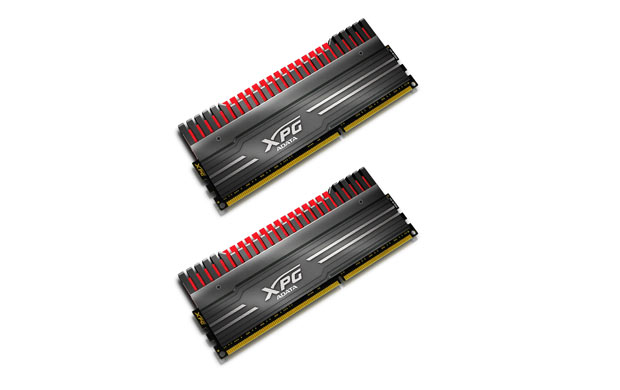
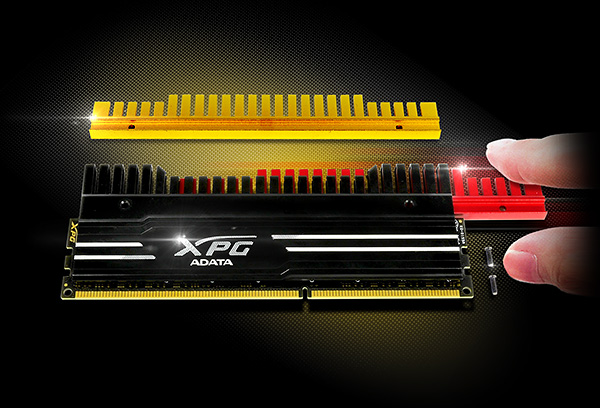
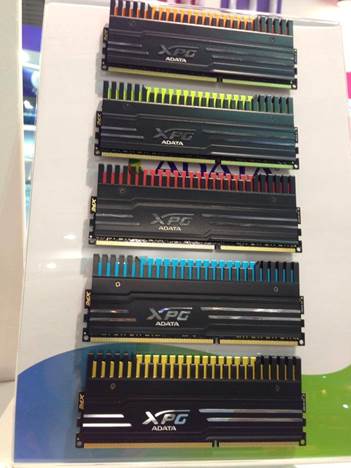


 Quote
Quote





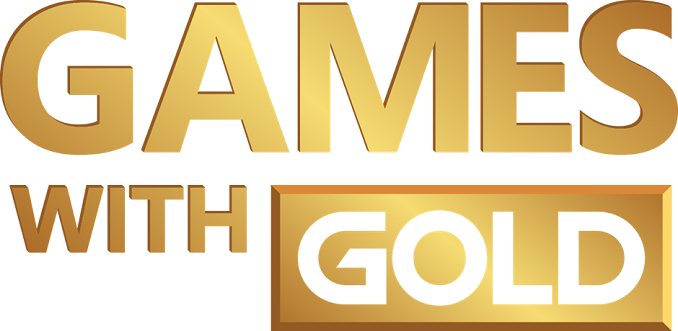




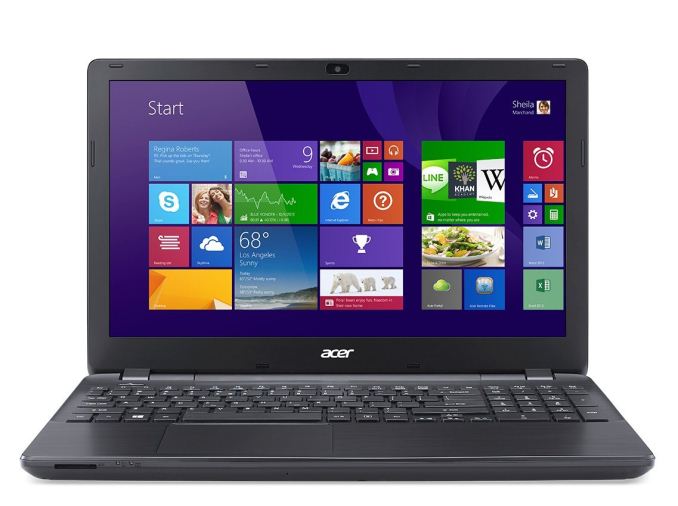
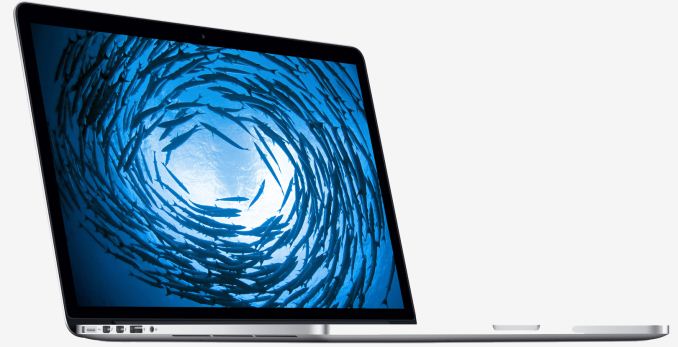
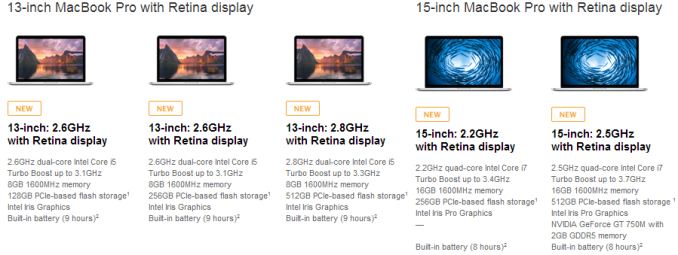


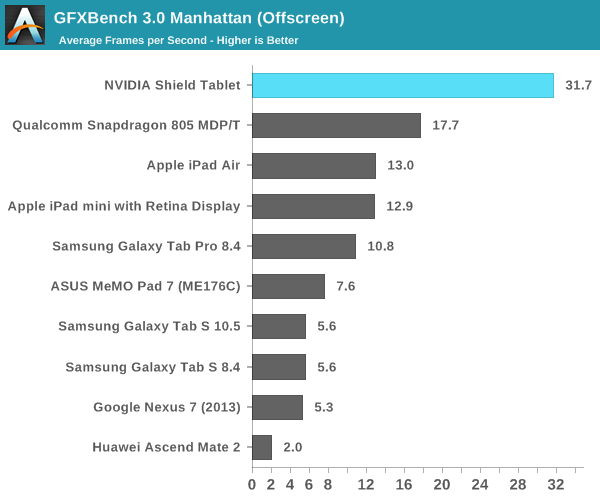
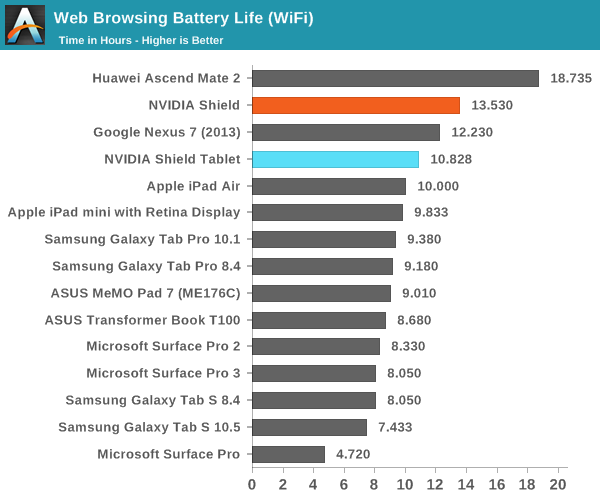
















Bookmarks